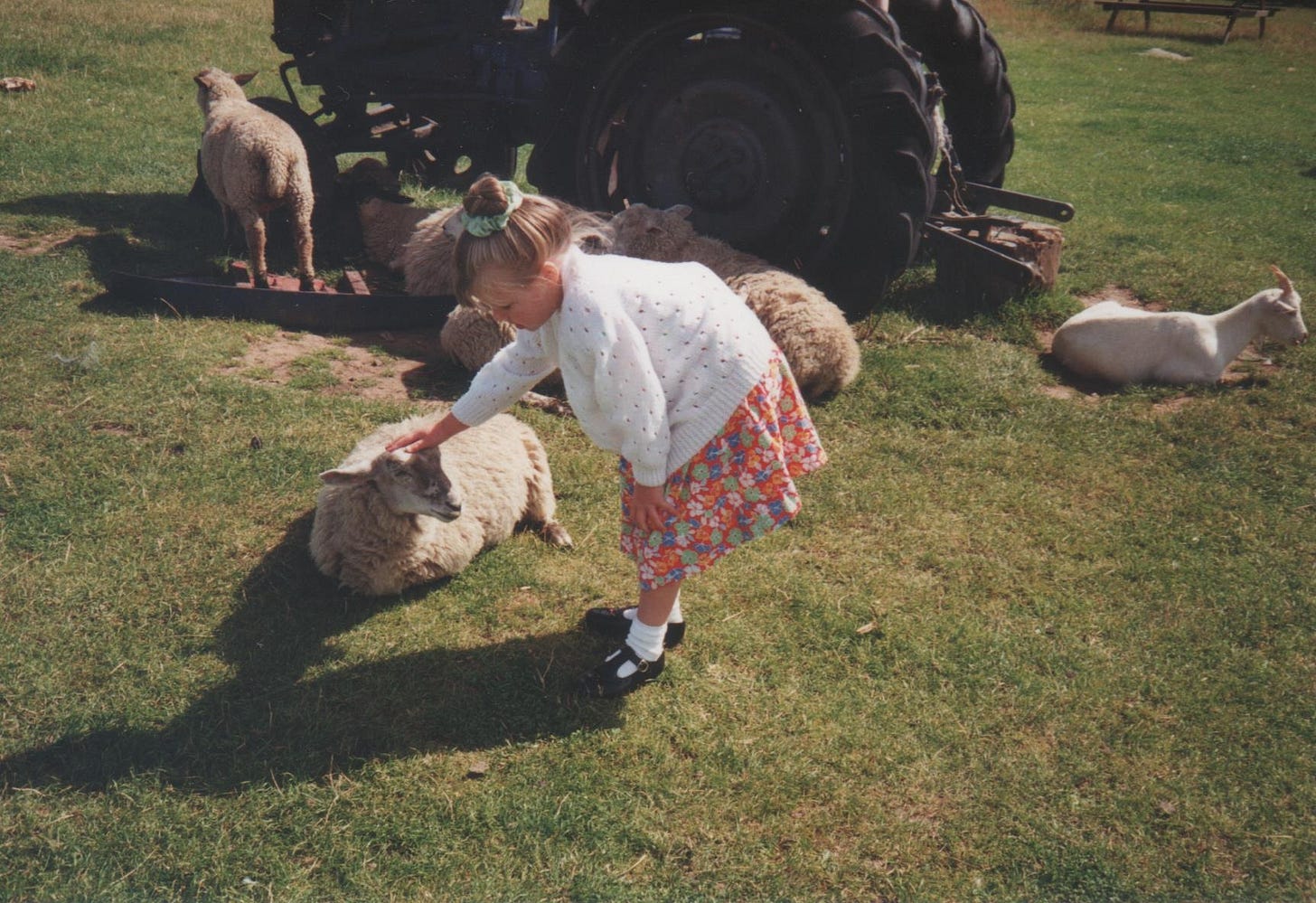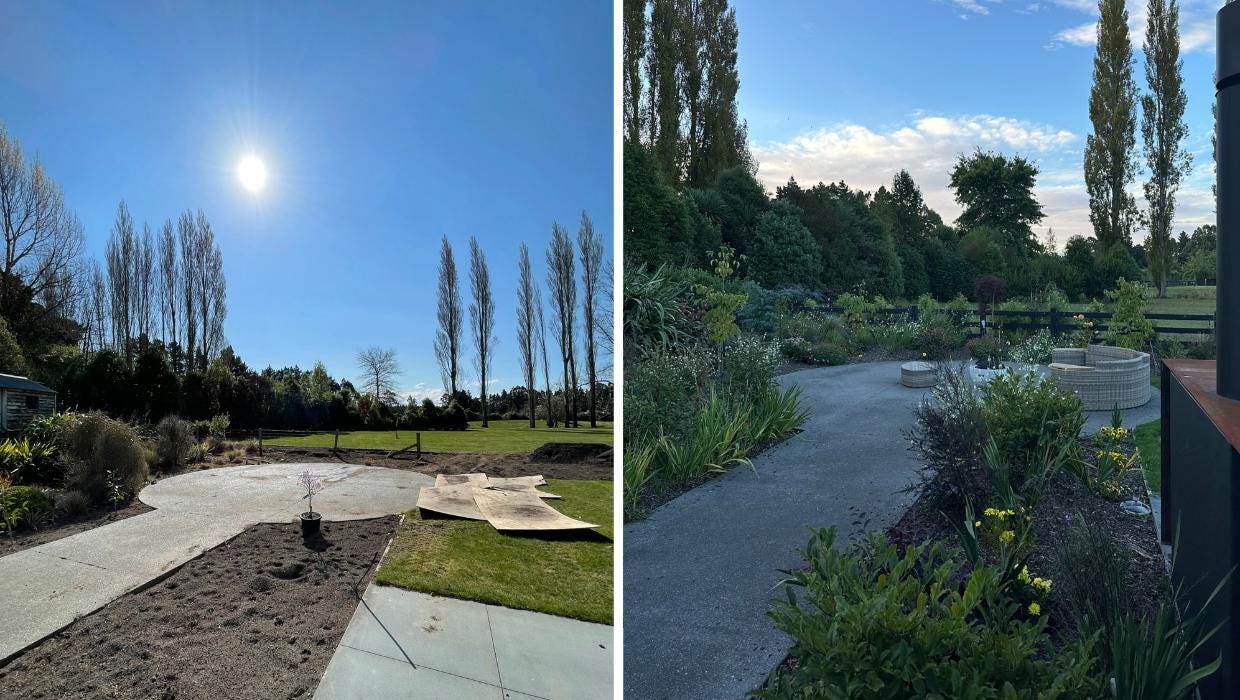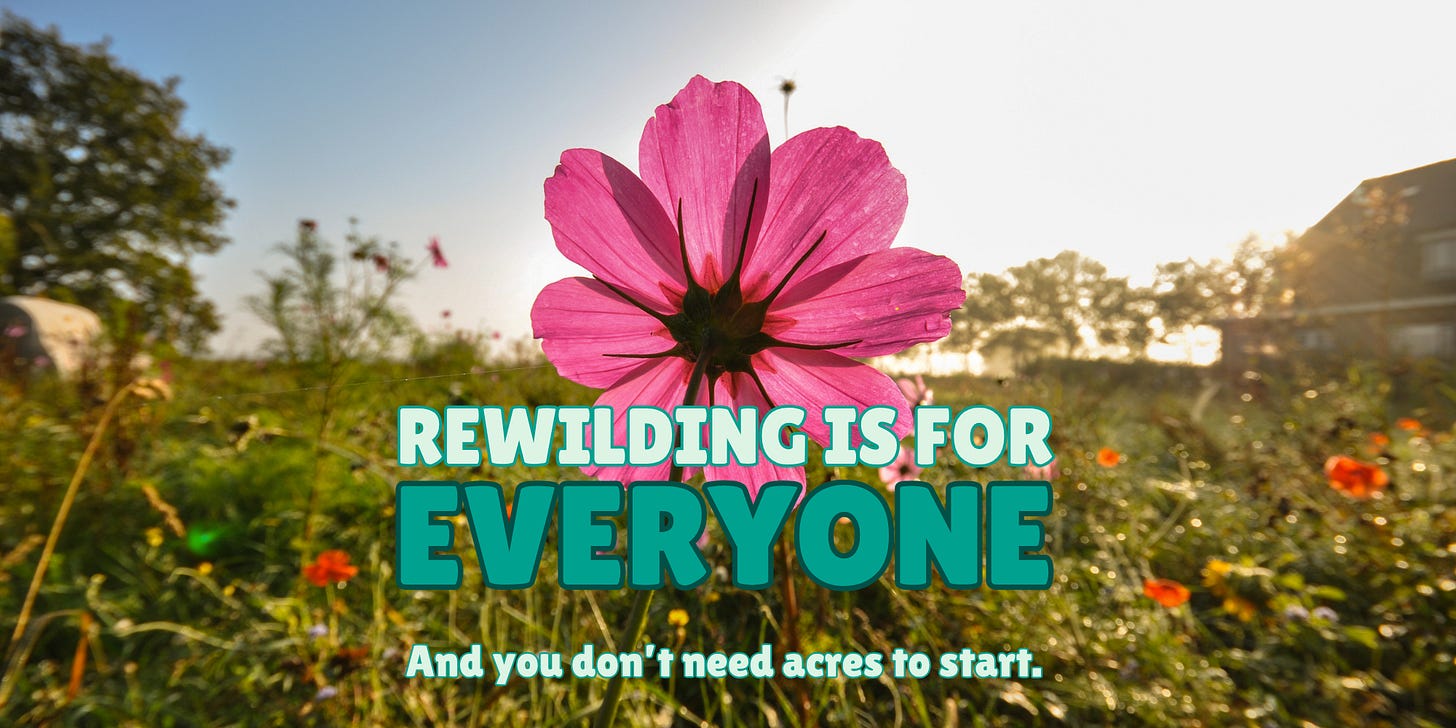When I was a kid, I knew I wanted to live in a cottage, with a thatched roof, no electricity and a horse-drawn carriage.
Those were the days - so young and stupid. Now I’m older, wiser (ish) and as my joints hurt in the cold, I have a much greater appreciation for electricity.
What hasn’t changed though was my determination to have land and fill it with animals. Which is why a couple of years ago, fresh from selling Ethique, I set out to buy a lifestyle block.
I didn’t care too much about the house, I was looking for established trees, native gardens and an extra bonus would have been a pond or two.
I looked for what felt like fricking forever. Most of what I found were square blocks surrounded by lawn borders flattened by galeforce winds. Nice, but not what I was looking for.
Those that did tick the box outside, came with fun little additions inside, like a leaky roof, or subsidence at one corner. Yay for earthquake prone towns.
But eventually, I found one in rural Canterbury. It was… peculiar. The house was far too big, it was an unusual shape and alarmingly it had had locks on the outside of all the bedroom doors 👀 We found loads of sheep skulls throughout the place and a terrifyingly creepy older style wheelchair in the shelterbelt. It was massively neglected, with tangled wire fencing, plastic bloody weedmat everywhere (which I will ban when I am supreme overlord), and one random chicken running around absolutely terrorising everyone who looked at her. RIP Bockity.)
It also had what looked like bullet holes inside in some places, but I asked no questions and neither should you.
But it had a stream. It had beautiful trees throughout the property (though they desperately needed some serious help), and about 4 acres of lawn that were just begging to be dug up. It had some gentle sloping hills, and massive shelter belts (and not all of them pine surprisingly) and did I mention the stream? Technically, it’s an irrigation race, but it was surrounded by trees and flowers and I loved it.
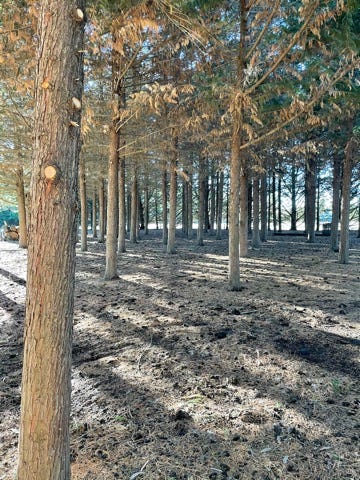
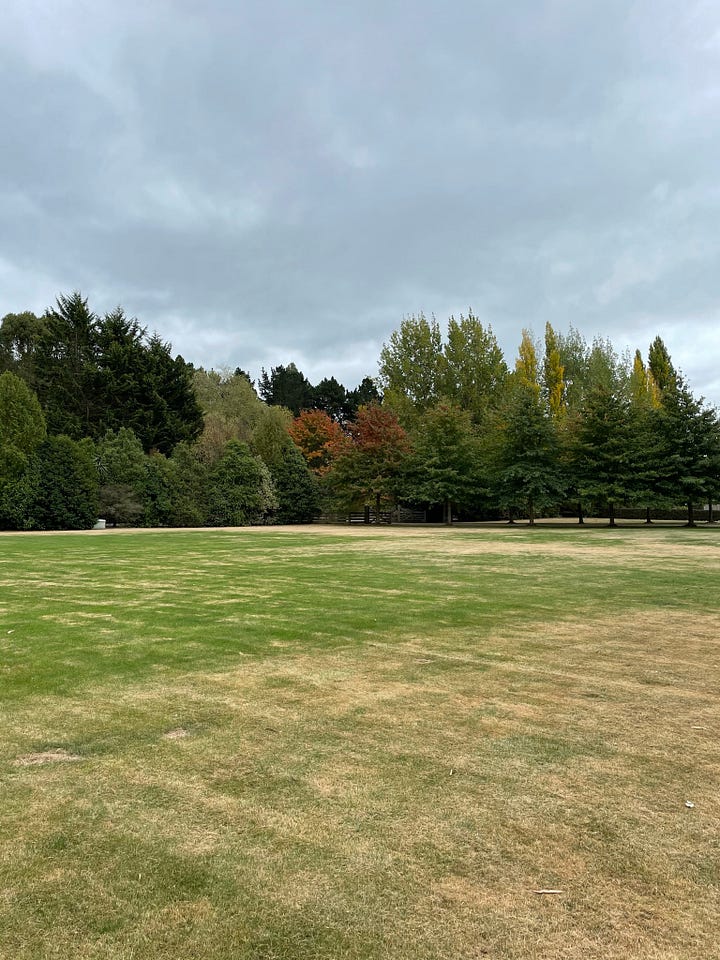

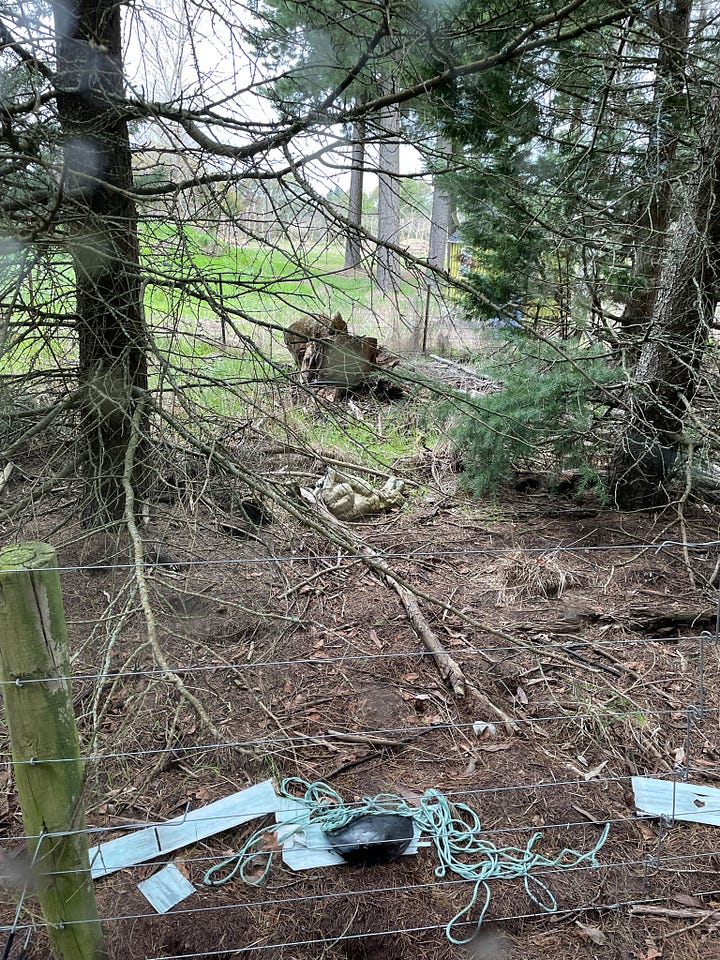
It had so much potential.
I’m a big fan of leaping without doing much looking, so I bought the house and spent the next 6 months or so rewiring, paneling, and painting the inside. We had issue after issue and I have come to the firm conclusion that I will never, ever build a house from scratch because fuck that.
We had a steam explosion inside (solar hot water), inept tradies (though also some brilliant ones who were worth their weight in gold), I spent twice what I meant to and three years later that solar hot water still doesn’t ducking work.
But, honestly I don’t really care that much about the house.
The outside is the best bit.
The first year was mostly dedicated to remediation. Once the horse rail paddocks were in, we pulled down loads of pine trees, planted 150m of native shelter belt (pre-irrigation, so we would cart water about 500m by the bucket load to pour on the newly planted babies. Such fond memories.)
The weedmat (straight to hell) was pulled out of the ground, tearing itself into tiny microplastics as it went. The overgrown gardens went, then the sad soil sprinkled with compost and mulched.
The fun bit was of course plant shopping. Which is almost as good as going to a book shop (and as I type that my inner Brianne is screaming ‘WHEN DID I GET SO OLD’?!) I spent enough money at local plant nurseries to build and outfit my own, filled my horse float with thorns, soil and and bits of detritus and I still have some of the calluses from planting at last count 8,000 plants.
Thankfully along with the bullet holes and slightly concerning locks (oh yes, and the barn filled floor to ceiling with toilet paper), the house also came with a gardener in his 80s, who had come back specifically to whip it into shape for the sale. He’s still a regular fixture at my place now, digging massive holes without breaking a sweat and throwing hay bales around with abandon. I’m still skittish around hay because one had a spider on it that one time.
Luckily he’s both very patient and open to trying new things because I would randomly decide to undertake a new project off the cuff quite regularly. Things like the dino dome and insect islands were created with no planning, research or horticultural training (bar that one botany paper back in my undergrad years).
The dino dome is an area for native lizards (yes… I know lizards are not dinosaurs, but lizard dome is a bit shit sounding isn’t it?) It was originally a kids playground but as I don’t want children but do want native lizards it was an easy decision. Down came the massive playhouses (to a family somewhere down south), out came that fucking weedmat and in went chunks of wood to rot down, stones for basking, woodchips for water retention and shelter, lots of species of plants to attract wildlife and a couple of sources of water.
Lizards are now much more regularly seen on the property. More can be done here though - so watch this space.
The insect islands are a way of digging up the monstrous oversized lawn without ending up in hospital with a heart condition. We dug randomly shaped 25m² ish patches and filled them with native plants, fruit trees and flowering shrubs to attract insects and birds. Which they do - in abundance. Lawns are effectively deserts with very little biodiversity. These islands are almost like stepping stones that wildlife can bounce from one to the next. It’s a nice happy medium for those who like lawn. You get biodiversity and a place to wander through, or play backyard cricket.
Strangely enough, these projects have worked out well and the difference in the birdlife from when I first moved in till now (3 years later) is absurd.
Over the last couple of years since we’ve experimented with wildflower meadows (went way better than the internet said it would, but more on that in another article), tussock mounds, a chamomile lawn, and now we’re pulling down the lifeless desert of a forestry block and remediating it into a native forest. Again, without any guidance from people who’ve done it before because my favourite part of all of this is figuring out some theory and giving it a ago. So far, so good.
I will do separate articles on those projects as they are something we can do that make a measurable difference for wildlife, soil health and plant cover. I’m sure they have proper names and there is loads of research behind them that someone much cleverer has done, but you will wrestle those names from my cold, dead hands.
I am saying ‘we’ a lot, and I would be remiss if I didn’t mention that my parents have been massive helpers in doing all this. Mum’s second favourite place in the world is a plant store and Dad loves engineering challenges so as much as they may roll their eyes at being excellent lifestyle-blockers, they have risen to the occasion marvellously.
I went away for work once and found out they’d hired a friend and his digger to put some massive boulders and a running water log-thingy in the fledgling dino dome as a surprise, which was very sweet.
Anyway, this is a long rambly read to simply say that it’s been a shitload of work, but absolutely worth every blister, every unexpected invoice and even every time encountering a gigantic spider out in the garden. (The one downside to rewilding is that yes, spiders are also wildlife. I am learning to get a grip.)
Honestly, when I moved in the place was lifeless. The soil had that horrid stagnant smell (you guessed it… it was the weedmat), the stream was basically a blocked, murky pit of sadness with the occassional sad tuna (eel) swimming about, the plants were on the edge of death and there was no birdlife to be seen or heard.
It’s only three years later but you can’t get the bloody things to shut up. Korimako (bellbird), pīwakawaka (fantail), kārearea (falcon), tāringa (starling), warou (welcome swallow), pūkeko, pīpīwharauroa (shining cuckoo), tauhou (waxeye), kurukōwhai (yellowhammer) and many, many more. No kererū yet though. I am tempted to pinch some from somewhere and introduce them… (That is a joke, don’t call DOC.)
More learnings soon.
I just wrote this to celebrate World Environment Day, and to remind you that we can actually all make a difference and it’s totally worth it. It doesn’t need to be digging up a billion bloody acres of lawn, it can be as simple as leaving an easily-escapable water dish outside for thirsty bees.
If you are interested in rewilding, I talked about it a bit here:
And here:
And there’s a stuff article here…





